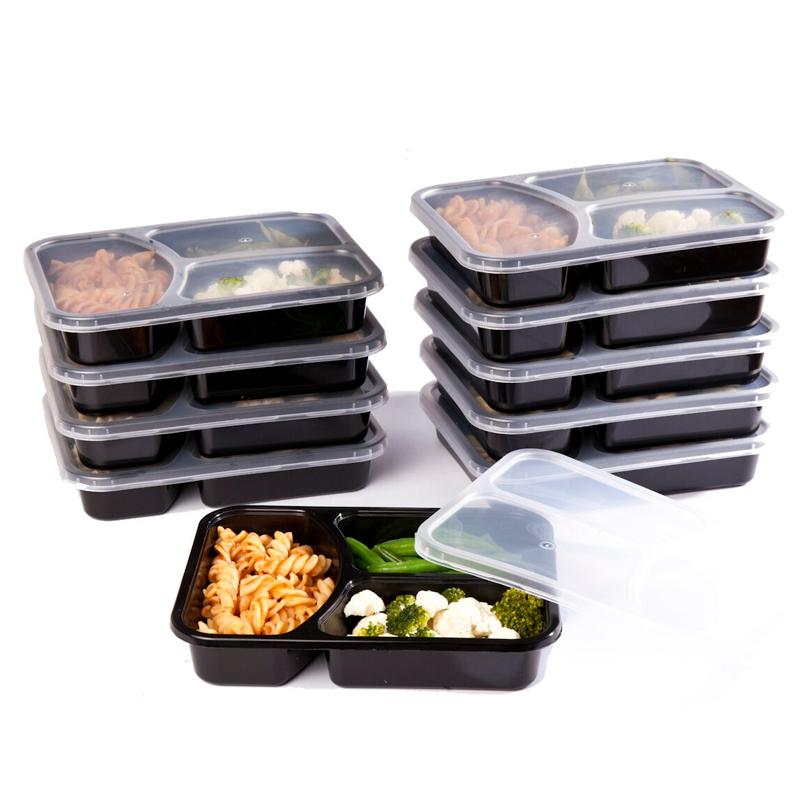Plastic kitchenware is one of the great conveniences of the modern, 21st century kitchen. When you use plastic kitchenware, you get the benefit of containers that are air tight, light, flexible, and, unlike harder materials like glass or ceramic, do not break or chip when dropped. On top of all that plastic containers are lighter in weight, and may even be used in ovens or microwaves in addition to storing food in a freezer, fridge, pantry or cupboard!
So with all these benefits going for them, it seems like as you long as you use plastic in your kitchen you’ll be fine! But that’s actually not the case. In the same way that some types of metals or other substances may be more appropriate for use in different situations, the same is true of plastic. There can be a big difference in both the quality and safety of one type of plastic kitchenware versus another. But what are these differences? Let’s get an in-depth look.
There’s More Than One Plastic
Metal is a big term that encompasses a lot of different substances. So even though there’s a huge difference between a stainless steel pot, and a piece of aluminum foil, both of these substances are classified as metals. The same is true for plastic. The plastic kitchenware you use to transport your food for the family picnic is also in the same family as the Styrofoam cup that you might buy a drink in at the park or fairground.
Plastic is a big family of different synthetic substances that can be manufactured to different needs, textures, and, of course, shapes and colors. But this classifies plastics into different substances with different properties. Styrofoam, for example, is a great temporary storage solution, because it is so cheap to manufacture in a variety of different shapes, and is water tight enough to contain fluids like drinks. It’s also flexible, soft but durable enough to act as great padding or packing support for delicate goods like electronics that need to avoid heavy impact.

However, Styrofoam, while great as a way to conveniently hold food and liquid, is not necessarily good as a long term storage solution for food. And it’s certainly not recommended for food preparation in the same way other plastic kitchenware might be. One of Styrofoam’s biggest failings is its low tolerance to heat. So while some hot coffee is perfect to pour into a Styrofoam cup, putting that same Styrofoam into an oven, or a microwave may actually melt it. Even very hot foods, such as battered fish taken out straight out of boiling oil and put in a Styrofoam container may actually melt that Styrofoam on contact!
Food Grade Is Essential
Plastic can be manufactured in all shapes, sizes and colors for different purposes. When it comes to plastic you want to use specifically for use in the kitchen, make sure that the plastic is actually “food grade.” This means that it uses materials and manufacturing processes that have made it safe to be used with food.
In this case, what “food grade” means is that the risk of “migration” or “leeching” has been minimized or eliminated entirely. Migration/leeching refers to a reactive, chemical process. Different foods are made with different ingredients, of course, and some of those ingredients will have specific chemical reactions. That’s why cooking with tomatoes in copper cookware, for example, can affect both the copper, and the tomato, as the specific acidic content of the tomato reacts with the molecular structure of copper. The same can apply to plastic that is not specifically manufactured for food use.
So, for example, storing a salad that has a particular dressing on it, such as vinegar, may actually chemically react with a generic, not-food-grade plastic container. This may cause some of the chemicals in the plastic to actually mix with the food, which, especially over the long term, can have a serious, negative health impact if you eat it. In other words, trying to save some money by deciding to use the plastic planter that some seedlings came in to store food afterwards may be affecting the health of people that eat that food later.
Respect Labels
A final thing that separates some plastic kitchenware from others is versatility, and this is usually clearly defined by the kind of labeling the kitchenware has. Some plastic kitchenware while 100% food grade, has been designed specifically for storage at room temperature or below, nothing else. Other plastic kitchenware however, usually the more premium models that cost a little more, are durable enough that they can be used in the microwave or even oven when it comes time to warm up food.
Packaging and labeling on modern, plastic kitchenware products will clearly indicate if a piece of kitchenware is microwave or oven safe. If you don’t see this labeling, don’t take the chance on assuming it is! Respecting the design specifications of plastic kitchenware means a safer eating experience.

